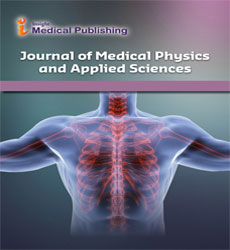Abstract
Comparison of Absorbed Dose Rate in the Healthy Organs by the Mammosite and Contura Applicators in Breast Brachytherapy
Brachytherapy is one of the treatments for breast cancer. In brachytherapy treatment systems, high dose rate sources are used in interstitial implantation. By the late 1960’s, with a few small exceptions, all brachytherapy sources and applicators were manually connected or implanted inside the patient.
With increasing concerns about the quality of treatment and the possible effects of radiation on employees, many efforts have been made to reduce radiation exposure to operators by using after loading machines. The after loading method requires the initial placement of non-radioactive applicators or carriers inside or on the patient's body, after which radioactive materials are placed. In this method, the sources move with a specific radioactivity at certain distance and precisely to each other in the systems after loading (after load).
Iridium 192 was first used for Brachytherapy at the University of Oxford in 1976 and has been widely used in this field. Accurate knowledge of dose distribution is of particular importance to design treatment methods.
In this study, modeling of two standard applicators in the breast cancer treatment named Mammosite and Mammosite-ML (Contura) is done by Monte Carlo simulation code.
Then, the amount and distribution of the dose in breast brachytherapy the dose reached to the organs at risk of radiation, including; lungs, ribs, and skin and other organs, are evaluated, and calculated and the time of treatment in each session is checked to introduce the best applicator with the lowest dose in healthy organs and the shortest duration of treatment.
Author(s): Fatemeh Mahdavi*, Alireza Shirazi Hosseini Dokht and Mahdi Sadeghi
Abstract | Full-Text | PDF
Share this

Google scholar citation report
Citations : 194
Journal of Medical Physics and Applied Sciences received 194 citations as per google scholar report
Abstracted/Indexed in
- Google Scholar
- China National Knowledge Infrastructure (CNKI)
- Secret Search Engine Labs
Open Access Journals
- Aquaculture & Veterinary Science
- Chemistry & Chemical Sciences
- Clinical Sciences
- Engineering
- General Science
- Genetics & Molecular Biology
- Health Care & Nursing
- Immunology & Microbiology
- Materials Science
- Mathematics & Physics
- Medical Sciences
- Neurology & Psychiatry
- Oncology & Cancer Science
- Pharmaceutical Sciences

